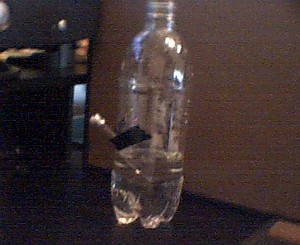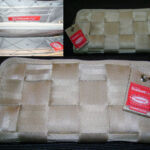Bongs are pretty elegant devices. I’ve seen some in head shops sell for over a thousand dollars with such brilliant glass craftsmanship that they would look at home in a temple somewhere. However, even a basic glass bong can strain the average person’s wallet, and there’s always the danger of it cracking or breaking if dropped. So, there’s always the option of making a homemade bong. These are fairly easy to construct and are effective enough at producing cooled, somewhat filtered smoke from whatever you choose to smoke. However, there are some important precautions that you should take when making and using a homemade bong.
First, you have to be mindful of the materials you use to construct your bong. In terms of materials for the chamber, glass is probably the best choice. It’s inert, which means it won’t react chemically with any of the substances or processes you will be subjecting the bong to. Glass is also resistant to the kind of heat that will be reaching the chamber and it’s also clear which can help you gauge how much smoke is entering the chamber. Plastic is probably the second best material to use for the bong chamber. Its only drawback is that it can potentially melt when subjected to flame, but since the heat is dissipated along the stem, this will not really be an issue. There are a couple of things you should NOT use to construct the chamber of your bong. First, do not use PVC pipe. Although it might be safe to use PVC for the chamber portion of the bong, do not under any circumstances use it for the stem or the bowl portion. If PVC is subjected to flame then it can release toxic chemicals which you will then inhale. Not the best for health. Also, be extremely wary of using certain metals for either the chamber, stem, or bowl. Most metals don’t have a low enough melting or sublimation point which could pose a danger when using a lighter flame. However, some metals like lead could possibly release harmful toxins into the bong water.
Second, if you are using plastic for the stem of the bong, make sure that it terminates a good inch or two before the bowl portion. The reason for this is that if a lighter flame is pulled hard into the bowl, it could potentially melt the end of the plastic stem. This is inadvisable because plastics give off harmful vapors when subjected to flame. Furthermore, under no circumstances use a material for the bowl that has a lower melting point than the temperature of the flame you are subjecting it to. This means that any kind of plastic is out. Aluminum foil is actually a safe material because the melting point of the metal is far greater than the temperature of the flame it is being subjected to. Therefore the whole contention of “hot ions” being released due to reactivity is largely bunk.
Finally, be mindful of the kind of sealant you are utilizing. If you are using silicone caulk or other kind of commercial tile or fixture sealant, you’ll be fine even under high temperatures. However, if you are using something like duct tape to seal the holes in the bong, then make sure that there is at least an inch or two distance between the sealant and the flame. Again, duct tape can melt and release harmful fumes if it touches the flame.
That’s about it. Under no circumstances am I encouraging people to suddenly drop everything and make their own bong. Even though bongs are used to smoke any kind of plant matter or herb, they are one of the most obvious pieces of drug paraphernalia that could be lying around the house. If you feel you must make your own bong, please take the points of this article seriously, educate yourself further, and be safe.





